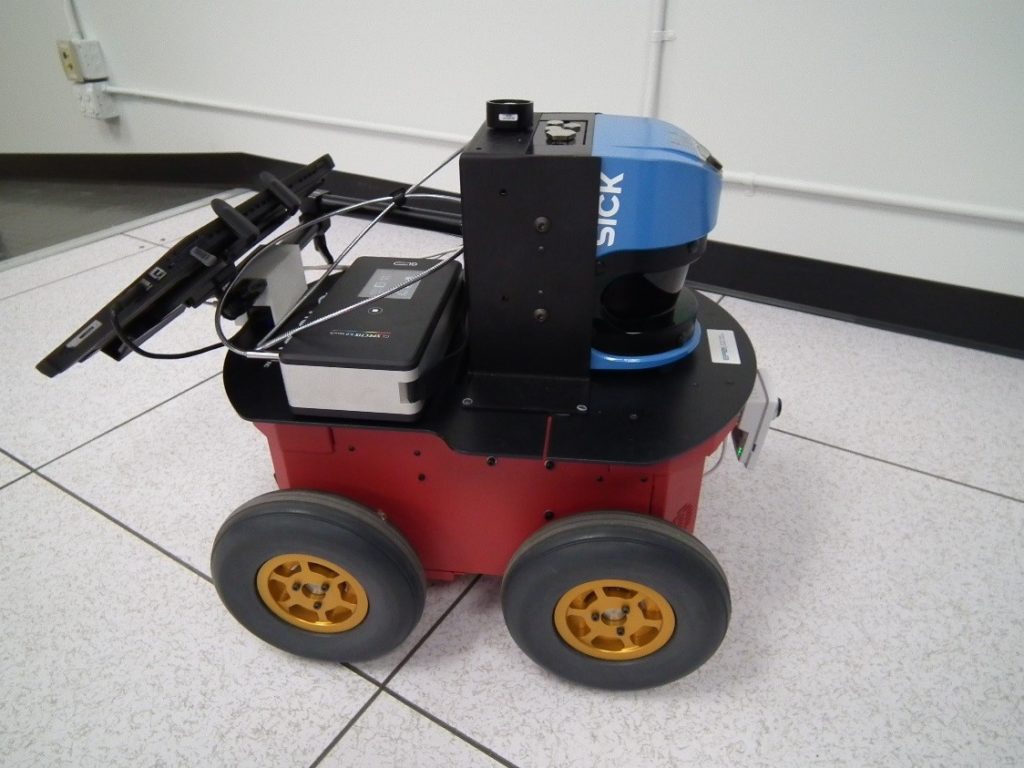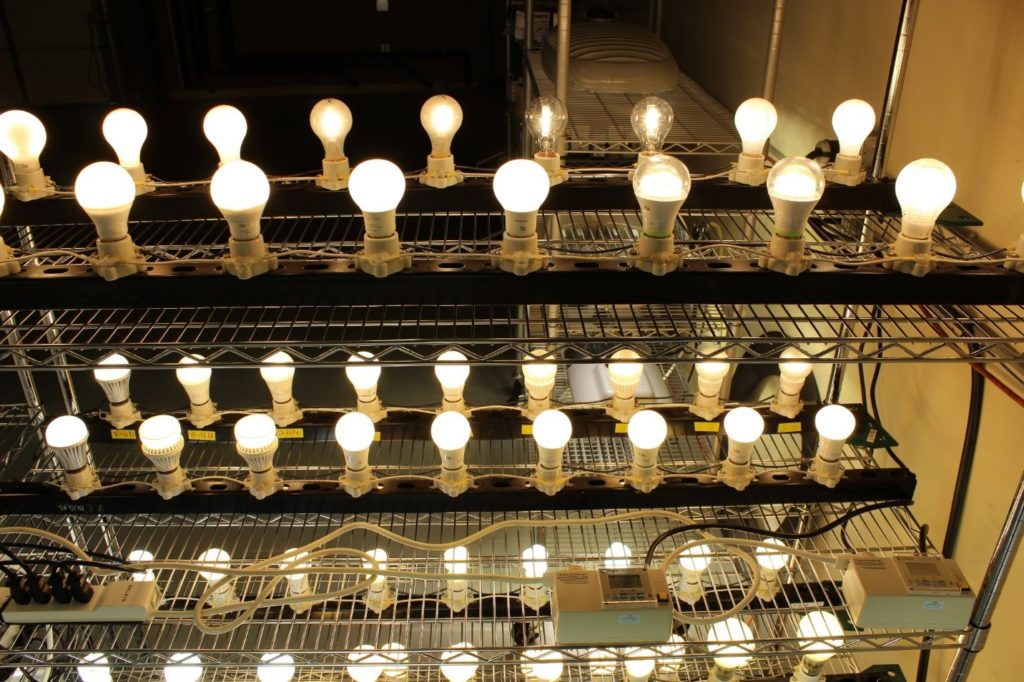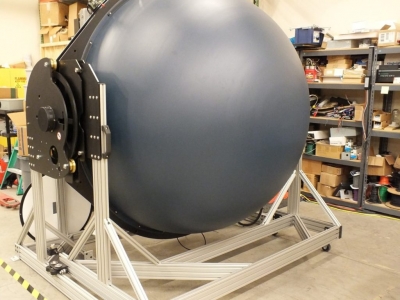EPRI Sheds Light on Opportunities and Pitfalls in Lighting
Lighting is one of the most fruitful areas of energy efficiency, a mainstay of utility rebate programs, and among the most innovative fields of electricity research and development. “Currently, some lighting products see as many as five product updates throughout a single year—an innovation rate similar to the computer industry at its prime,” said Frank Sharp, technology research manager of EPRI’s lighting program. “We see a growing array of lighting sources, products, systems, and networks.” The familiar 250-watt high-intensity discharge (HID) street light can now be easily replaced with a 100-watt light-emitting diode (LED) lamp, and for a few extra watts the LED becomes multifunctional—equipped with a camera, speakers, environmental sensors, cell phone booster, and more.
The pace of innovation has ended a long era of product dominance, exemplified by the 100-year run of incandescent bulbs. Predictions of LED dominance by 2025 may or may not pan out. “What’s to say that the next product in the pipeline won’t beat out LED,” said Sharp. “Lighting will continue to offer large energy savings, and by 2035 these savings will be much larger than today.” Indeed, EPRI research has shown that commercial indoor lighting can yield 180 terawatt-hours of savings through 2035. 180 terawatt-hours is about 5% of U.S. end-use electricity consumption in 2013 (based on data from the U.S. Energy Information Administration’s Annual Energy Outlook 2015).
EPRI’s lighting team is charged with understanding the spectrum of lighting technologies—halogen, compact fluorescent (CFL), HID, LED products, light-emitting plasma, and induction, to name a few. Utilities manage an array of lighting programs, ranging from rebates and customized incentives to accelerated replacement, consultation, design, and specialized rates. With so many new commercial products, it is inevitable that some will fail or fall short of manufacturers’ claims. Utilities must be progressive and cautious, and EPRI helps them navigate the opportunities and pitfalls.
“Our lab looks at how technologies work in the real world and tests new lighting product claims through use and life cycle evaluations,” said Sharp. “Utility company reputations are on the line as they make decisions about lighting products. Further, their ability to meet state-mandated energy efficiency goals is strongly affected by the success of these products.”
Key EPRI lighting research areas include:
- Dimmer incompatibility. Consumers expect all dimmable lighting products to operate similarly. In 2015, EPRI evaluated 20 different LED lamps when dimmed by 5 different controls. Lamp and dimmer performance varied significantly, depending on the pairing.
- Networked lighting controls. Networked controls offer additional energy savings, but performance varies widely by application. EPRI is examining these variations and educating utilities on how to fit controls in customer programs.
- Linear LED products. Linear fluorescent lighting is efficient, and it is the most widely installed technology in U.S. commercial and industrial buildings, but LEDs typically offer energy savings of 40% or more. EPRI is evaluating the advantages and disadvantages of four approaches for replacing linear fluorescent with LED.
- Robotic measurement. EPRI has developed the Autonomous Mobile Measurement Platform (AMMP) robot, which moves through indoor and outdoor spaces to evaluate lighting performance, thermal profile, electromagnetic interference, and other factors. Results are incorporated in high-resolution maps. EPRI is expanding the range of factors AMMP can evaluate.
- Next-generation lighting technologies. Among the new technologies that EPRI is scouting are laser-based lighting, organic LEDs, next-generation incandescent, graphene-based lighting, and ultra-efficient LEDs.
- Life cycle testing. At any one time, EPRI’s lab is testing more than 60 new lighting products to determine their lifespan.
“There are many good lighting labs out there,” said Sharp. “What makes EPRI’s lab unique is its zeal for evaluating novel concepts, combined with an understanding of how products function in real-world power conditions.”
Lighting for Indoor Agriculture
Indoor agriculture is becoming a major load in some areas. EPRI’s agricultural lighting research primarily focuses on how and when to use various lighting and lighting control technologies to maximize crop yields, as well as the operation of indoor agricultural facilities. Modified greenhouses use electric lighting to augment natural light. Converted warehouses use electric lighting 12–16 hours per day, depending on the crop growth cycle. Where growing beds move on a conveyor system, lighting is commonly used 24/7. Agricultural lighting fixtures range from a few watts to a few thousand watts, with some designed to emit specific wavelengths depending on the crop. Spinach, for example, responds to different wavelengths than kale. EPRI recently published an industry outlook for lighting applications in indoor agriculture.
EPRI Technical Expert:
Frank Sharp, Doug Lindsey
Further Resources:
- Dimming Characteristics of Low-Cost LED Lamps
- Thermal Failure Points of Screw-Based Lamps
- A Comparison of Two Solar-Powered LED Street and Area Lighting Systems
- An Industry Outlook for Indoor Agriculture: A 2015 Electrification Technology Deep Dive Summary
- LightFair International 2015 Conference Report
- LightFair International 2014 Conference Report
- An Overview of LED Street, Area, and Garage Lighting
- Advanced Lighting Technologies: Energy Efficiency and System Compatibility
- Innovative Lighting Controls for Integrated Demand Side Management (IDSM)
- Evaluation of Plasma Lighting: Lab Investigation, Technology Assessment, and Application Guide
- Autonomous Mobile Measurement Platform (AMMP)








